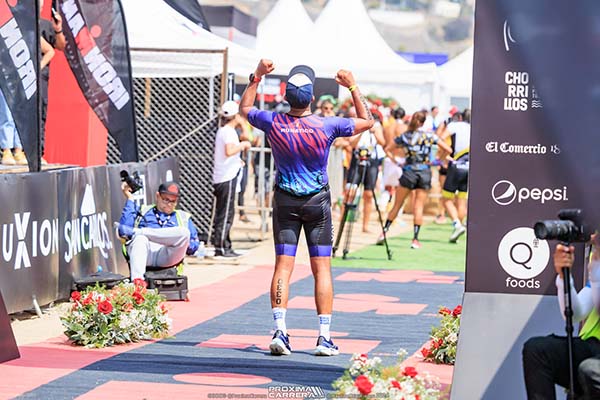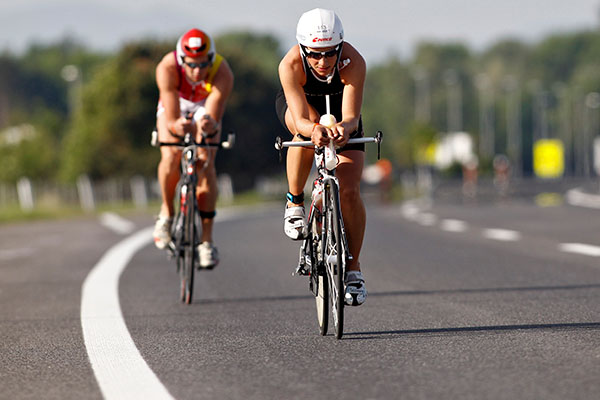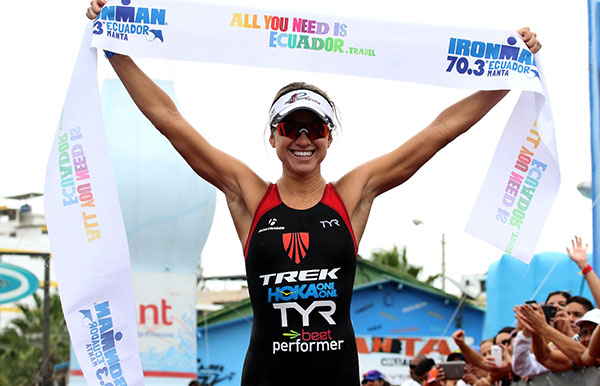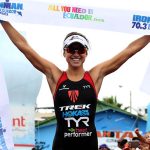Upon embarking on my triathlon training journey, I frequently encountered discussions surrounding the Ironman 70.3. Initially, I found the concept quite daunting. I questioned my ability to achieve such a feat, but as I delved deeper, I recognized that this event serves as an excellent intermediary between shorter triathlons and the full Ironman. As I prepare for my inaugural triathlon, I am contemplating setting the Ironman 70.3 as a long-term objective. So what is an Ironman 70.3, let’s talk about it.
What is Ironman 70.3?
An Ironman 70.3, often called a Half Ironman, is one of the most popular triathlon distances in the world. The name “70.3” refers to the total mileage of the event: 70.3 miles, which equals 113 kilometers. Just like a full Ironman, it’s made up of three consecutive disciplines, but at half the distance. Athletes start with a 1.2-mile swim (1.9 km), followed by a 56-mile bike ride (90 km), and finish with a half marathon run of 13.1 miles (21.1 km).
The combination of these distances makes the Ironman 70.3 a true test of endurance, strategy, and mental strength. It’s long enough to challenge experienced athletes who are preparing for a full Ironman, yet accessible enough for ambitious beginners who want to push beyond shorter triathlon formats like sprint or Olympic distance. Many triathletes see the 70.3 as the perfect middle ground: tough enough to demand serious training and preparation, but not as extreme as the 140.6-mile full Ironman.

Why I’m Considering an Ironman 70.3
While I am actively preparing for my first triathlon, I continuously contemplate what lies ahead. A Sprint or Olympic-distance triathlon is an excellent starting point, yet I aspire to challenge myself further, and the 70.3 seems like an ideal goal. It offers a sufficient test of endurance without being as consuming as training for a full Ironman, which can significantly dominate one’s life.
For individuals like me, who appreciate a blend of swimming, cycling, and running, this race provides a comprehensive assessment of all three disciplines. Success demands strength in each, and the training fosters improvement across the board.
An Overview of the Ironman 70.3
The Swim (1.2 miles / 1.9 km)
The swim is typically regarded as the most intimidating segment for many participants, and I can certainly relate. I have been honing my skills in the pool; however, open-water swimming presents a distinct set of challenges. Waves, currents, and interactions with fellow competitors increase the difficulty. Yet, this is an integral aspect of the experience!
If you share my sentiments, focusing on enhancing endurance and building confidence in open water is crucial. I have concentrated on refining my technique and becoming comfortable with longer swims, as this marks only the beginning of a lengthy race day.
The Bike Ride (56 miles / 90 km)
The cycling portion constitutes the longest segment of the race, often feeling interminable. I have been diligently training to progressively extend my cycling distance, incorporating hills and longer rides during weekends. It is imperative not only to focus on speed but also to regulate pacing to avoid early fatigue.
For me, maintaining proper nutrition during the bike ride is essential. It is important to replenish energy with snacks or energy gels throughout the ride to ensure adequate stamina for the running segment. I am still experimenting to discover the most effective strategies for this, but prioritizing hydration and energy maintenance on the bike is vital.

The Run (13.1 miles / 21.1 km)
After all that swimming and biking, running a half marathon might seem impossible, but with proper training, you can do it. The key is learning to run on tired legs. I’ve been practicing “brick” workouts, where I go from a long bike ride straight into a run. It’s tough at first, but it really helps prepare for the feeling of transitioning from cycling to running.
In the race, it’s important to pace yourself and stay focused on the finish line. The run can feel like the hardest part because your legs are exhausted, but this is where mental strength comes in.
My Training for a Half-Ironman
Right now, I’m training for shorter races, but I’ve already started to think about what training for a 70.3 would look like. It’s all about balancing your time between swimming, cycling, and running. For me, building endurance is the key, but I also need to make sure I don’t overtrain or get injured.
Here’s how I’d approach training for an Ironman 70.3:
- Swimming: I’d aim for 2 swims a week, mixing long, steady swims with some faster-paced intervals to build both endurance and speed.
- Cycling: At least 1 long ride a week, gradually increasing the distance and including some hills. I’d also focus on practicing my nutrition during these rides, as it’s a long time to be on the bike. You can also include a shorter ride focused on interval training to build speed and endurance.
- Running: Running 2-3 times a week, with one long run and one shorter, speed-focused session. I’d also keep up the brick workouts to help with the bike-to-run transition.
- Strength training: A couple of times a week, focusing on core and leg strength, which is important for all three disciplines.
Recovery is just as important as the workouts themselves. I’ve been learning to listen to my body and take rest days when I need them, so I avoid burnout. If you’re just starting your training, start with this guide.
Race Day Nutrition and Hydration
Race day nutrition is something I’ve been thinking a lot about. For a race like the Ironman 70.3, you need to have a plan. In the days leading up to the race, I’d focus on carb-loading, making sure to eat plenty of pasta, rice, and whole grains to fuel my body.
During the race, it’s important to keep refueling, especially on the bike. I plan to experiment with energy gels, bars, and electrolyte drinks during training to figure out what works best for me. Staying hydrated is crucial, particularly during the bike and run when the heat and physical effort can take a toll.

Is an Ironman 70.3 Right for You?
If you’re thinking about tackling an Ironman 70.3, my advice is to go for it if you’re ready for the challenge. It’s not just about physical fitness; it’s about mental strength and discipline too. Training for a 70.3 is a serious commitment, but it’s achievable with the right plan and mindset.
For me, it’s a long-term goal, and I’m excited about the challenge. I love the idea of pushing my limits and seeing what I’m capable of. Whether you’re new to triathlons or a seasoned athlete, the Ironman 70.3 offers an incredible opportunity to test yourself and grow as an athlete. Find an Ironman 70.3 near you.






Hi mates, fastidious post and fastidious arguments commented at this place,
I am genuinely enjoying by these.
Good post. I learn something more difficult on completely different blogs everyday. It can at all times be stimulating to read content from other writers and practice a bit of one thing from their store. I’d want to use some with the content on my blog whether you don’t mind. Natually I’ll provide you with a hyperlink on your web blog. Thanks for sharing.
Can I simply say what a relief to search out someone who truly is aware of what theyre speaking about on the internet. You positively know how you can deliver an issue to light and make it important. Extra individuals must read this and understand this side of the story. I cant believe youre not more well-liked because you positively have the gift.